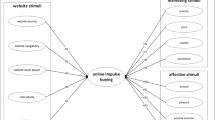Abstract
Animal studies of impulsivity have typically used one of three models: a delay of reward procedure, a differential reinforcement for low rate responding (DRL) procedure, or an autoshaping procedure. In each of these paradigms, we argue, measurement of impulsivity is implicitly or explicitly equated with the effect delay has on the value of reward. The steepness by which delay diminishes value (the temporal discount function) is treated as an index of impulsivity. In order to provide a better analog of human impulsivity, this model needs to be expanded to include the converse of impulsivity – self-control. Through mechanisms such as committing to long range interests before the onset of temptation, or through bundling individual choices into classes of choices that are made at once, human decision-making can often look far less myopic than single trial experiments predict. For people, impulsive behavior may be more often the result of the breakdown of self-control mechanisms than of steep discount functions. Existing animal models of self-control are discussed, and future directions are suggested for psychopharmacological research.
Similar content being viewed by others
Author information
Authors and Affiliations
Additional information
Received: 17 March 1999 / Final version: 6 June 1999
Rights and permissions
About this article
Cite this article
Monterosso, J., Ainslie, G. Beyond discounting: possible experimental models of impulse control. Psychopharmacology 146, 339–347 (1999). https://doi.org/10.1007/PL00005480
Issue Date:
DOI: https://doi.org/10.1007/PL00005480




